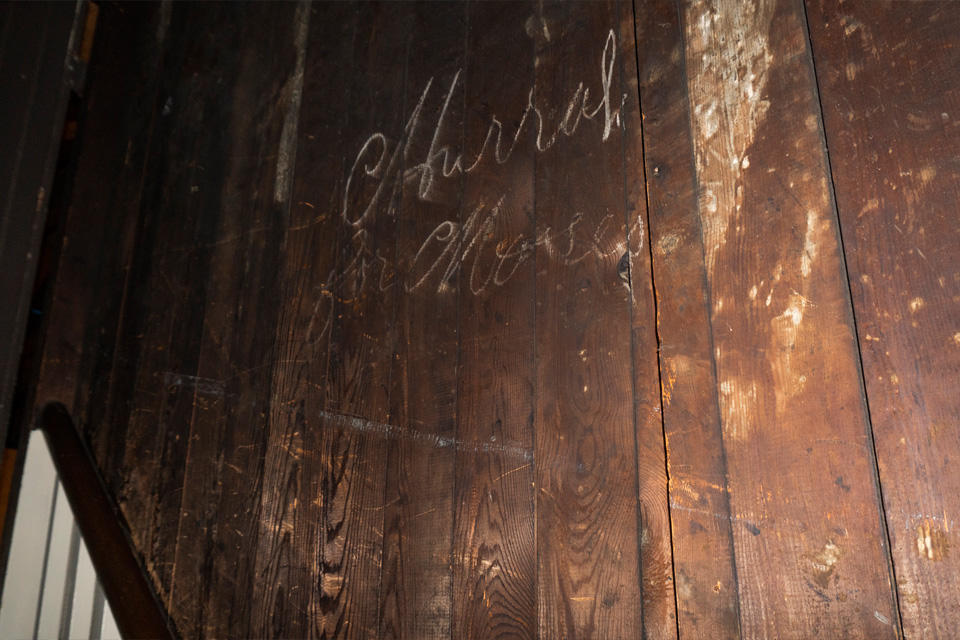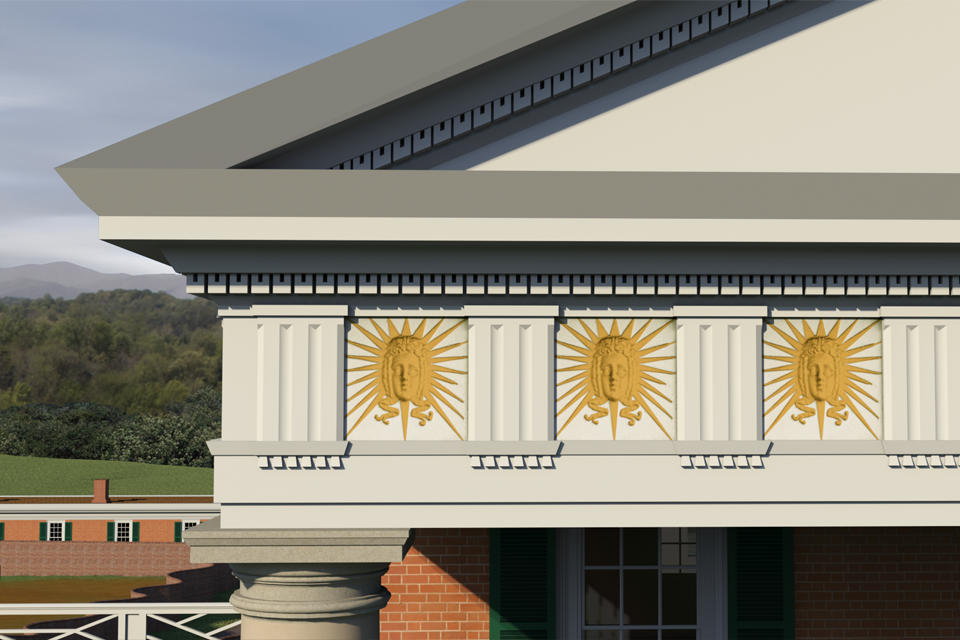Pavilion I: Moses and Burwell
Moses was an enslaved worker employed at UVA in 1824, 1825, and 1826. Each year, his labor earned his owner, Charles Poindexter, 50 to 60 dollars. While his exact role in constructing UVA remains unknown, it is possible that Moses was employed again in 1832 as a carpenter to build a staircase in Pavilion I, which still bears a chalk inscription “Hurrah for Moses.”
Born into slavery at Monticello in 1783, Burwell Colbert served as a painter and glazier before becoming Thomas Jefferson’s personal butler in the 1810s. A nephew of Sally Hemings, Colbert numbered among the five people freed by Jefferson’s will in 1826. Colbert married twice, fathering eleven children. He spent much of his later life working for UVA professors, likely as a painter, before his death in 1862. It may have been Burwell Colbert who painted the faces of Apollo on Pavilion I’s entablature the same shade of yellow found in the dining room of Monticello.




